Best light pollution filters for astrophotography 2025
We've rounded up the best light pollution filters for your camera, to help you get rid of street lights and skyglow.

Unless you're very lucky, light pollution is a serious issue for stargazers and astrophotographers. Light pollution filters can help isolate stars and reduce brightness from street lights or cities. They won't break the bank either, with some costing less than $50. They can cancel out skyglow, city lights and other unwanted factors, making sure your images retain their natural colors and contrast. Even if you've bought one of the best cameras for astrophotography, a light pollution filter can make all the difference.
With help from our expert reviewers, we've delved into narrowband and broadband light pollution filters, explaining just what kind of photography each filter is best suited to. And if you think your lens is letting you down, we've got the best lenses for astrophotography.
The quick list

Best for urban skies
If you're an urban photographer who wants more contrast in your images, this is the best choice for you.
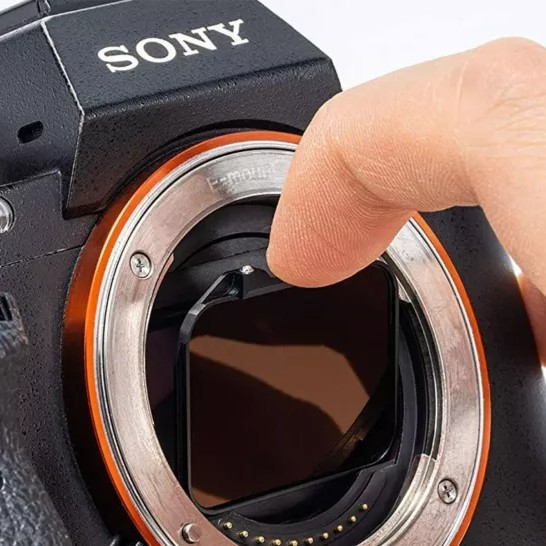
Best choice of design
Coming in screw-on, square plate and clip-in, there's a whole host of designs available for the Kase Wolverine Neutral Night. Its glass is also toughened and scratch-resistant.
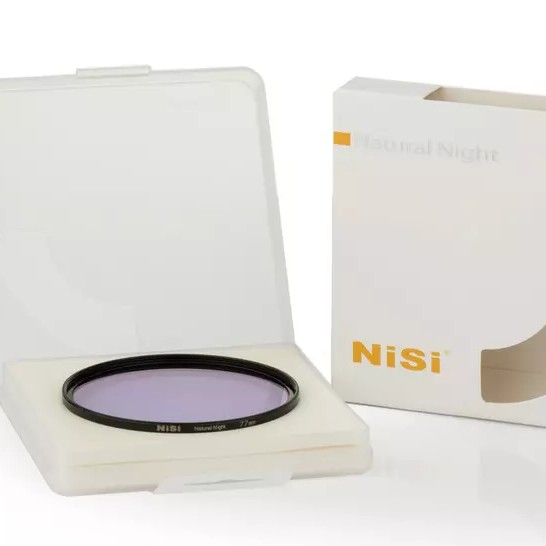
Best for drones
This is one of few light pollution filters that fits on the DJI Phantom 4 Pro and the Mavic Pro — though it's more suited for shooting nighttime cityscapes than starscapes.
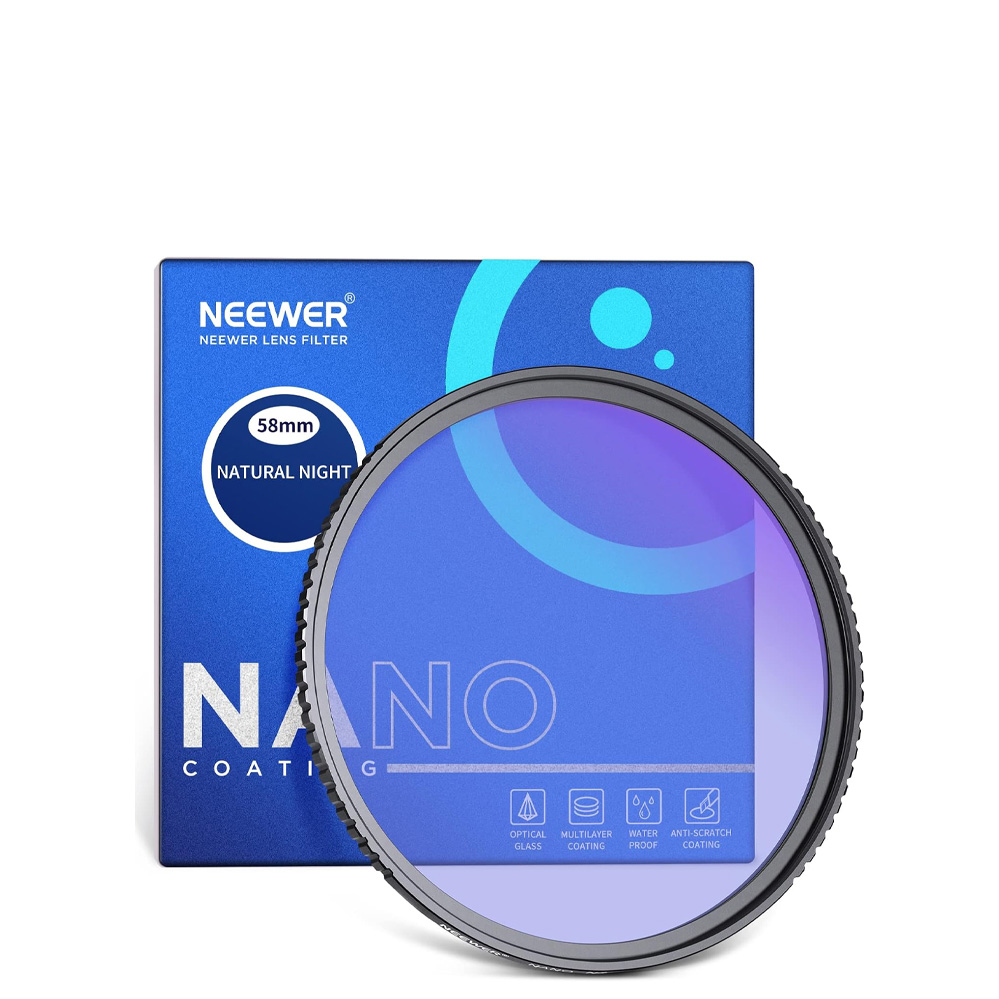
Best budget filter
For beginners astrophotographers or those on a budget, this Natural Night filter is a good way to eliminate skyglow and color casts without breaking the bank.
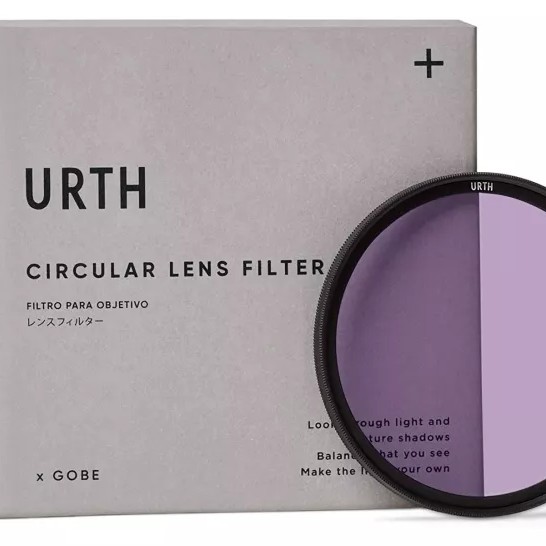
Best for eco-conscious consumers
We love the balance between affordability and quality that the Urth Neutral Night Plus offers, and it comes from an environmentally-conscious brand.
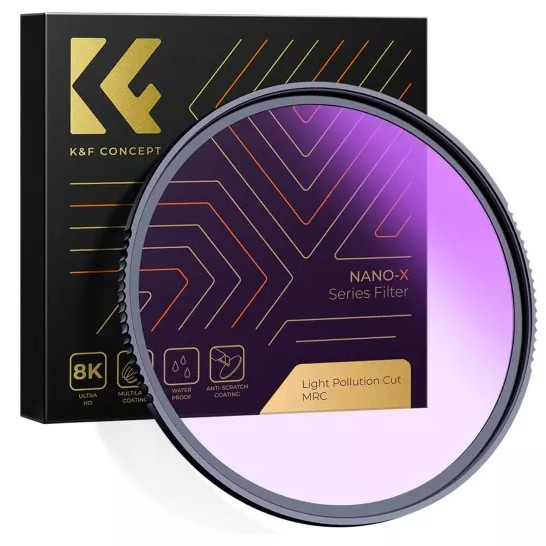
Best for removing orange glow
The K&F Concept Natural Light Pollution Filter is reasonably priced and does a great job of blocking yellow and orange wavelengths.

Best for nightscapes
This broadband filter improves nightscapes for cameras and drones by reducing light pollution from artificial sources and enhancing starlight. It's scratch-resistant and is available in drone-sized sizes.

Best for deep space
If you want to capture nebulae at their best and seriously reduce halos around stars, this is a powerful if pricey option.
Best light pollution filters we recommend in 2024
Why you can trust Space.com
Best for urban skies
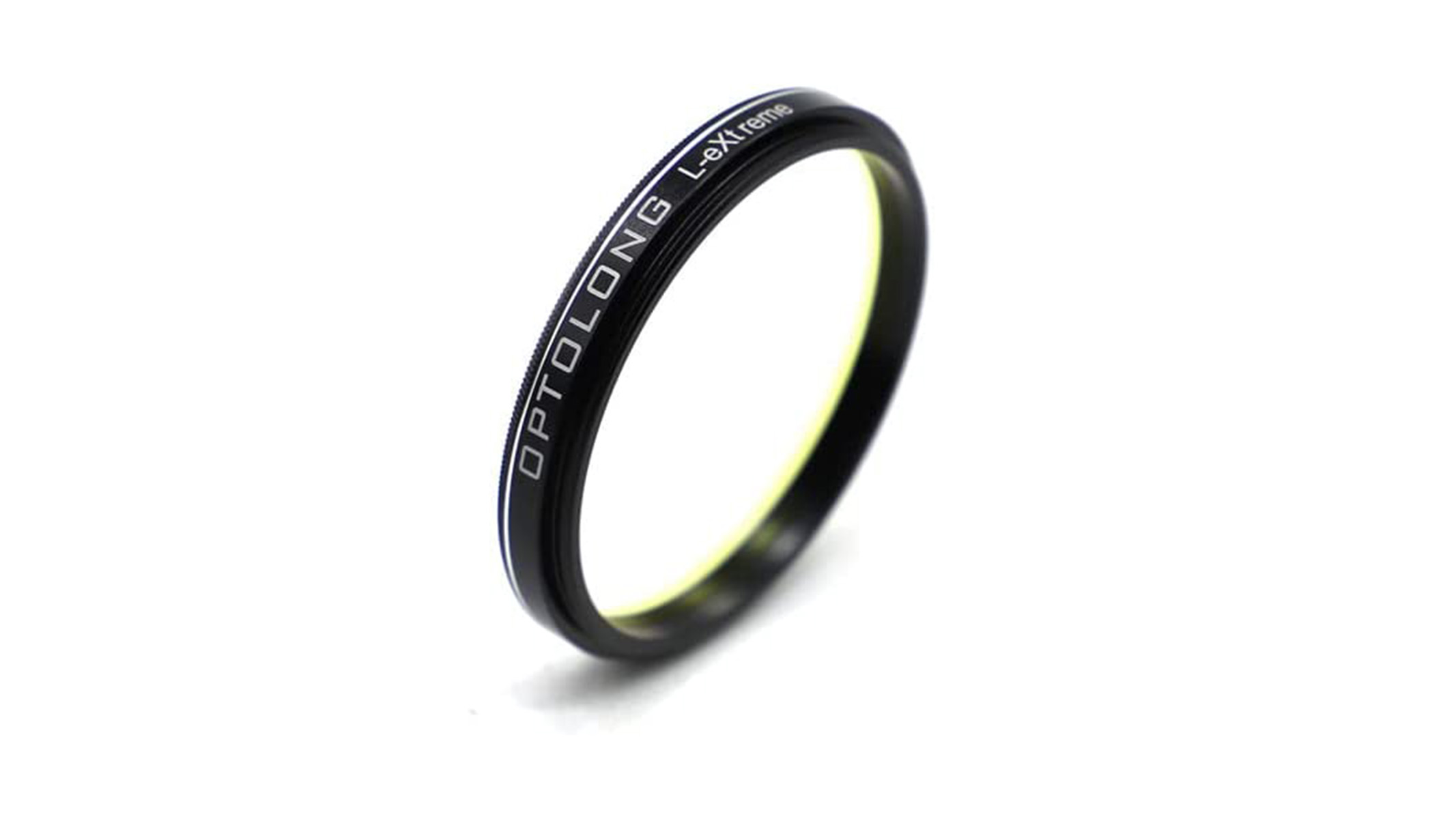
Optolong L-eXtreme light pollution filter
Our expert review:
Specifications
Reasons to buy
Reasons to avoid
✅ You're a seasoned astrophotographer: Due to their price, only experienced astronomers who focus on astrophotography would be more likely to purchase one.
❌ You're on a budget: While we think it's worth the investment, it's the most expensive option on this list by a long way.
🔎 Optolong L-eXtreme: A must-have for astrophotographers based in urban areas looking to photograph the night sky, with it being particularly adept for capturing nebulas. It's not cheap, but we think it's worth it. ★★★★★
If you enjoy astrophotography and use a CMOS or CCD camera, the Optolong L-eXtreme is an excellent choice for reducing light pollution. The previous version, the Optolong L-Enhance,was very highly regarded and the L-eXtreme is even better than that.
The Optolong L-eXtreme is an ultra-narrowband type of light pollution filter. It works by isolating two types of light wavelengths, H-alpha (Ha) and Oxygen III (OIII) at seven nanometers. The result is a boost to the amount of natural light that reaches your camera, all while the amount of unwanted skyglow is minimized as much as possible.
If you're living in an urban area and want to capture the most natural possible shots of the night sky, this is an excellent choice. It's particularly effective if you're capturing nebulas; we think the Optolong L-eXtreme is an essential choice for capturing grade-A images.
The only snag is that the Optolong L-eXtreme can make focusing and framing a bit harder since your images will be darker. However, if you adjust your camera settings beforehand, you’ll be set to capture stunning night scenes without any trouble.
Attributes | Notes |
|---|---|
Design | Images will appear darker when composing your shot. |
Performance | Separates H-alpha (Ha) and Oxygen III (OIII) wavelengths at seven nanometers. |
Functionality | Ideal for photographing nebulas. |
Best choice of design

Kase Wolverine Neutral Night light pollution filter
Our expert review:
Specifications
Reasons to buy
Reasons to avoid
✅ You want to travel with it: It comes with a pouch to keep it protected while traveling.
❌ You want something affordable: If you're on a budget, there are definitely cheaper options out there.
🔎 Kase Wolverine Neutral Night light pollution filter: A great choice for all types of nighttime photography, it eliminates the orange glow from streetlights and is tough and durable. ★★★★
We think the Kase Wolverine Neutral Night filter is a great choice of light pollution filter. Not only is it great for astrophotography but for nighttime cityscape shots in general. It reduces the amount of orange glow from streetlights captured by your camera, and lets the natural reddish light from nebulas shine through in your photos. What more could you want from a light pollution filter?
We’re impressed by how durable the Kase Wolverine Neutral Night filter is. Its name, 'Wolverine,' suggests toughness, and it absolutely delivers. Made from Pro HD optical glass, it’s scratch-resistant and strong enough to withstand accidental bumps. It also comes with a travel pouch for safe storage when you’re not using it.
The Kase Wolverine comes in various formats, including screw-on filters, square plates and even clip-in filters for mirrorless cameras. Not sure what type you need? Go read our light pollution filter FAQ at the bottom of this page where we aim to answer all common questions.
Attributes | Notes |
|---|---|
Design | Durable and scratch resistant. |
Performance | Pro HD optical glass ensures toughness. |
Functionality | Reduces orange glow from streetlights. |
Best for drones
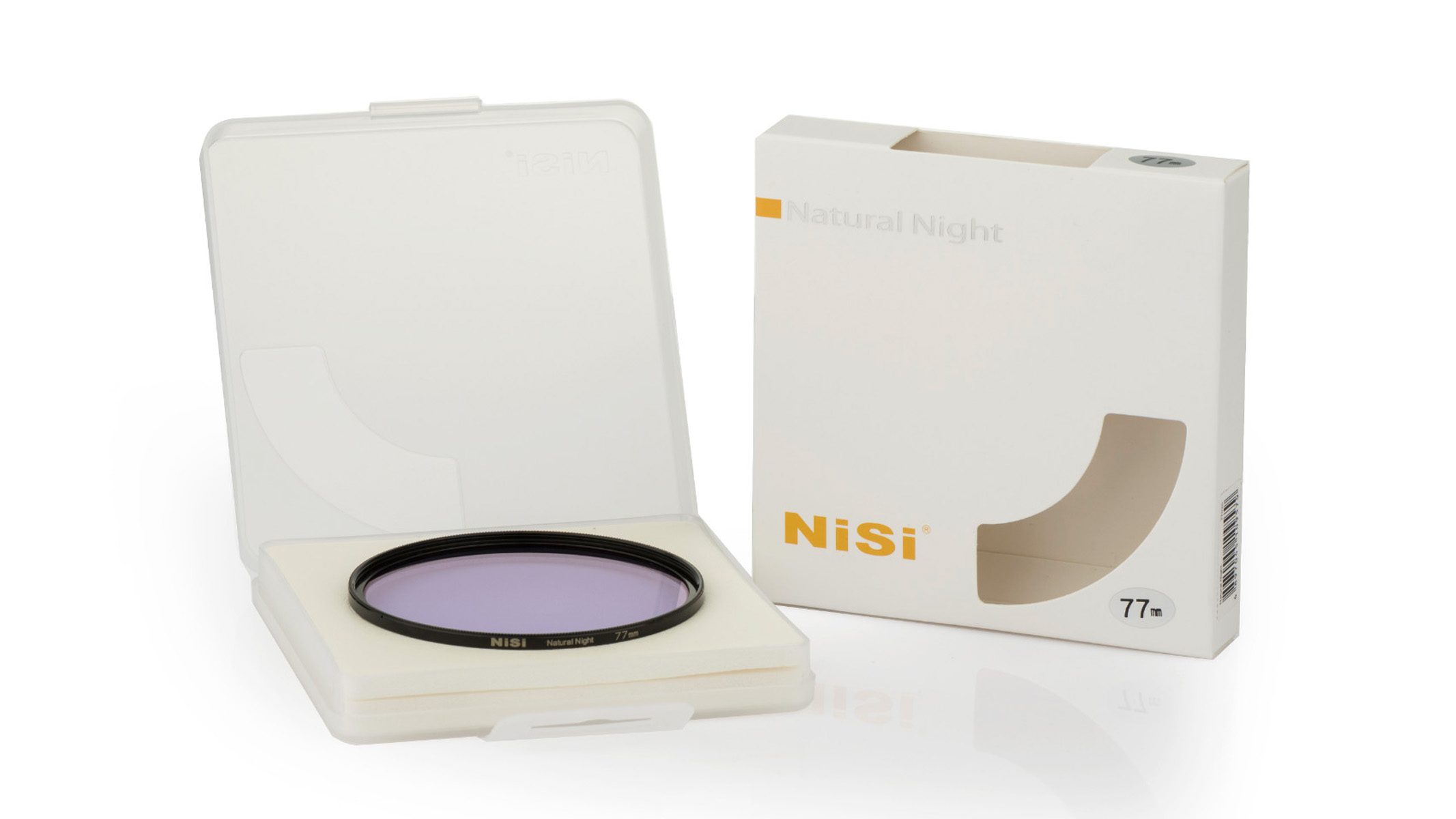
NiSi Circular Natural Night Filter
Our expert review:
Specifications
Reasons to buy
Reasons to avoid
✅ You shoot nighttime cityscapes with your drone: They sell versions of this filter that will fit onto DJI drones.
❌ You tend to break things: These filters are incredibly thin, so you need to make sure they are protected when not in use.
🔎 NiSi Circular Natural Night Filter: Designed especially for photographers who shoot at night, it's still a great choice today if you want to reduce light pollution from your images. ★★★★
Nisi's Natural Night filter was one of the first options to help reduce artificial light in photography. It's great for nighttime photos and is still a good choice for reducing light pollution. It filters out the yellowish tint from streetlights, helping keep your photos looking natural.
This circular version of the Natural Night filter stands out because it's available for the DJI Phantom 4 Pro and other advanced DJI Mavic Pro drones. This makes it particularly handy for capturing incredible nighttime cityscapes from above rather than starry skies. However, it does a fantastic job of blocking out light pollution, resulting in excellent image quality.
There is a downside to this filter, however: it's extremely thin and delicate. If you or whoever else might be assisting you have a tendency to be a little heavy-handed, you'll want to be extra cautious when handling it. How thin and delicate is it, you ask? Well, its glass is just 0.07 inches/2mm thick, so it needs to be handled with the utmost of care. You'll want to use a hard-sided case for storage when you're not using it.
- Shooting cityscapes with your drone? Read our DJI Mavic 2 Pro review
Attributes | Notes |
|---|---|
Design | Very thin and fragile glass. |
Performance | Maintains natural colors. |
Functionality | Compatible with DJI drones. |
Best budget filter

NEEWER Natural Night Filter
Our expert review:
Specifications
Reasons to buy
Reasons to avoid
✅ You're new to astrophotography: It's a brilliant filter that can effectively reduce color casts and skyglow without breaking the bank.
❌ You have a filter thread bigger than 82mm or smaller than 58mm: Currently, they have a somewhat limited size range.
🔎 NEEWER Natural Night Filter: Effective at removing color casts in your images with anti-reflection coating, it's also waterproof, oilproof and scratch-resistant. ★★★★
Astrophotography can get very expensive, so to keep things affordable, here's an offering from NEEWER. This Natural Night filter is perfect for anyone on a budget, or beginners who don't want to spend a lot of money on a light pollution filter if you're not sure you'll keep up the hobby.
The NEEWER Natural Light Filter is available in various filter thread sizes ranging from 58 to 82mm. You'll find the usual lens sizes covered, but if you have a particularly small or large lens you probably won't be catered for by NEEWER and will have to look elsewhere.
We're yet to test the NEEWER Natural Light Filter ourselves, but its reviews from users are overwhelmingly positive. Generally speaking, it performs just as good as a filter that costs more than twice the price, and users have reported that it does a great job of removing the yellow color cast from images. It's also sturdy, lightweight and easy to take care of, making it a no brainer if you're on a budget.
NEEWER claim in their advertising that the filter is waterproof, oilproof and scratch-resistant, though we haven't tested these claims ourselves. The plastic case it comes in is sturdy and will protect the filter, but we think it's a bit larger than necessary and might take up extra space in your camera bag.
Still, it's a very affordable way for astrophotographers to improve their images without spending too much money — we think that's a win.
- Read our Sony FE 16-35mm f/2.8 GM II review
Attributes | Notes |
|---|---|
Design | Anti-reflective coatings. |
Performance | Effectively removes yellow color casts. |
Functionality | Scratch resistant, waterproof and oil resistant. |
Best for eco conscious consumers
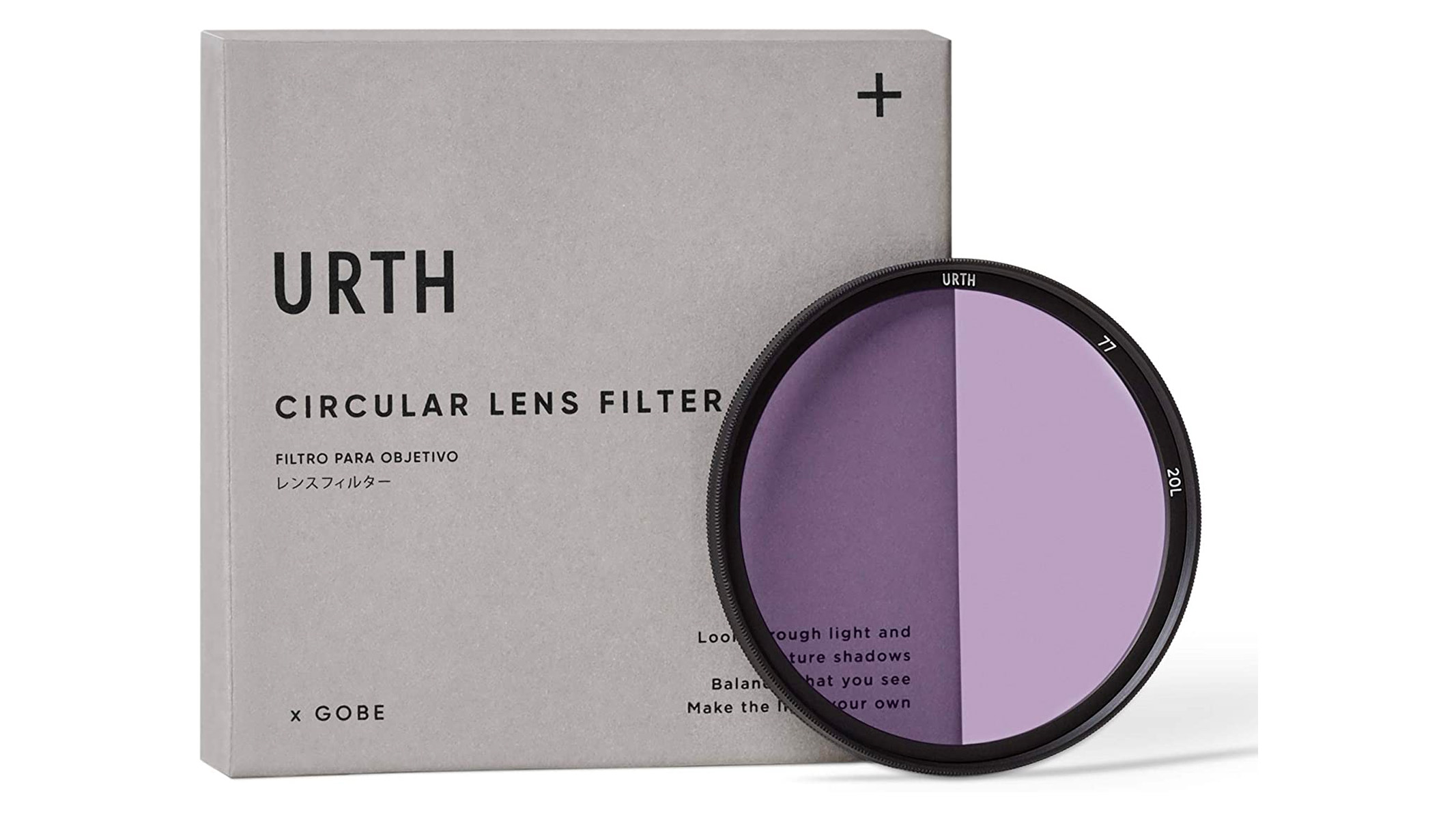
Urth Neutral Night Plus light pollution filter
Our expert review:
Specifications
Reasons to buy
Reasons to avoid
✅ You want to buy from a sustainable brand: Urth use recycled and recyclable packaging, plus they plant 5 trees for every product sold.
❌ You want something super affordable: They're not overly expensive, but there are cheaper options.
🔎 Urth Neutral Night Plus light pollution filter: This filter can cut light pollution’s warm color cast to capture truer colors and elevate your night photography. ★★★★
Known as GOBE prior to their 2020 reband, Urth has introduced some exciting products in the past four years. One standout is their Neutral Night Plus+ filter, which we consider one of the top options for reducing light pollution in astrophotography.
It’s a high-quality product, too. While we can't confirm Urth's claim that their glass is the world's best, it does have 20 layers of Neodymium coating. This coating reduces warm tones from light pollution, making your photos look more natural. Additionally, the nano-layers in the filter improve light transmission, resulting in sharper images, more accurate colors and greater depth.
As good as the product itself is, though, it's Urth as a brand that really interests us. Urth has a dedication to conservation that really really admire and the company believes that photography has a vital role to play in global conservation efforts.
Urth is continually trying to minimize their environmental footprint. That means sustainable packaging made from recycled materials, and for every product sold they'll plant five trees. You'll also find impact reports on their website letting you know just what sort of difference they've made to the Earth so far. Apparently, they've planted over 7 million trees in deforested areas across the globe so far — quite the achievement!
- An eco-conscious shopper? Check out the Silva Terra Scout XT headlamp
Attributes | Notes |
|---|---|
Design | 20-layer Neodymium coating. |
Performance | Provides sharp images, accurate colors and great depth. |
Functionality | Made with sustainable and recycled materials. |
Best for removing orange glow
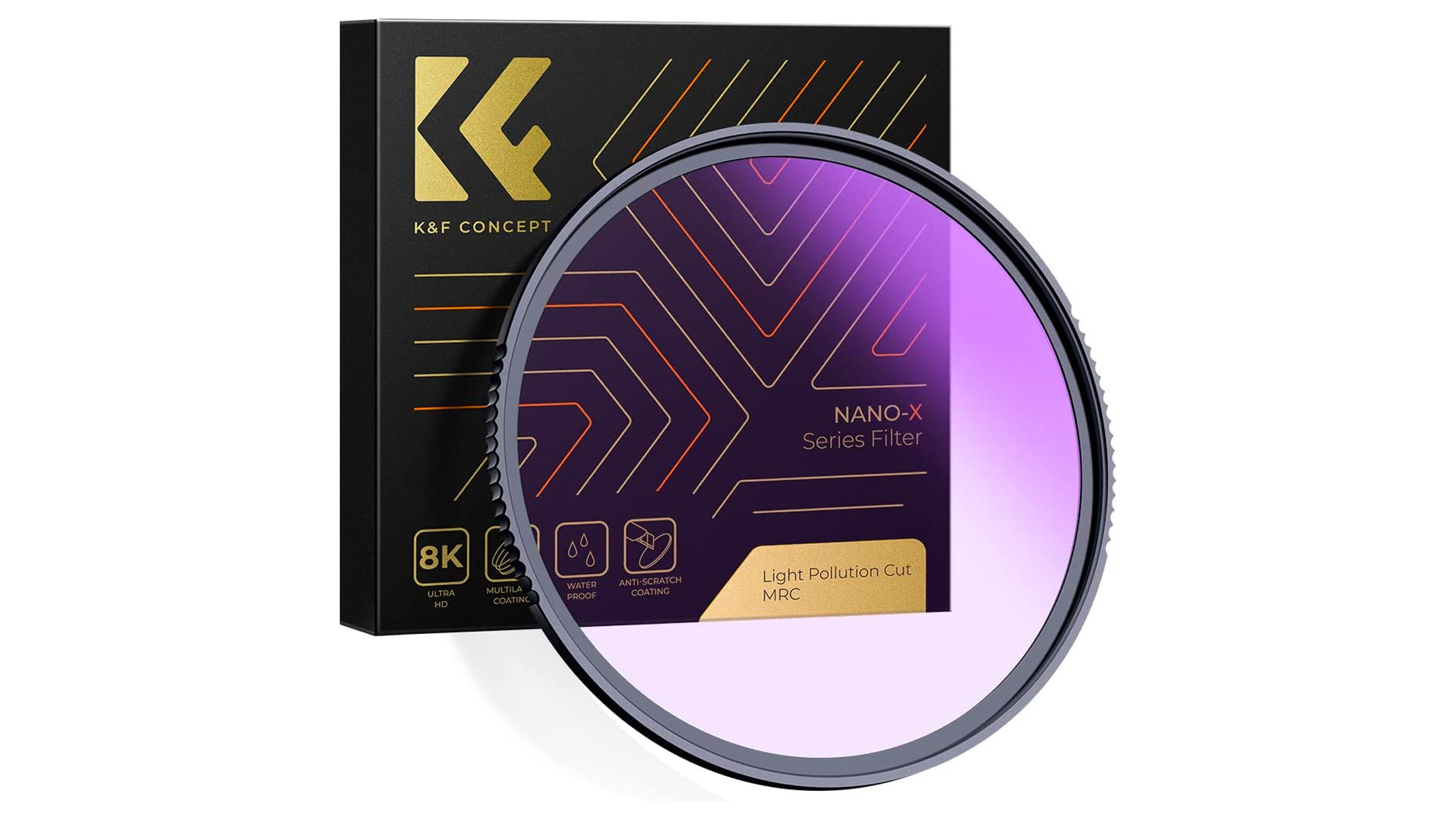
K&F Concept Natural Night light pollution filter
Our expert review:
Specifications
Reasons to buy
Reasons to avoid
✅ You stick to general nighttime photography: It's fantastic at cutting out orange glow from streelights.
❌ You do deep-sky astrophotography: This filter is better suited to more general nighttime photography.
🔎 K&F Concept Natural Night light pollution filter: It effectively blocks out yellow and orange wavelengths from entering the lens, we think it's one of the best light pollution filters for general nighttime shooting. ★★★★
The K&F Concept Natural Night light pollution filter might not be suitable for deep sky astrophotography, but it's excellent for general nighttime shooting. Plus, it's budget-friendly, making it a great addition to your photography kit.
The K&F Concept Natural Night filter effectively blocks yellow and orange light, reducing skyglow from sodium street lights. However, it can't fully counter the effects of broad-spectrum LED street lights, but this limitation is common to many of the filters on our list.
One thing to keep in mind is that you may have to tweak your in-camera settings to be able to use the K&F Concept Natural Night filter effectively. The manufacturer recommends you adjust your white balance to choose a color temperature between 700K and 1,500K. That's because the filter blocks out warmer wavelengths, so you'll need to compensate in order to get accurate colors.
- Sleep under the stars in one of the best stargazing tents
Attributes | Notes |
|---|---|
Design | Scratch and water resistant. |
Performance | Blocks out warmer light wavelengths. |
Functionality | Not ideal for deep sky astrophotography. |
Best for deep space

Optolong L-Ultimate Dual Bandpass Light Pollution Reduction Imaging Filter
Our expert review:
Specifications
Reasons to buy
Reasons to avoid
✅ You want to capture nebulae: This filter can offer excellent views of deep-space nebulae, and seriously reduces the halos on stars.
❌ You're on a budget or prefer shooting objects in our solar system: This is the most expensive filter on our list.
🔎 Optolong L-Ultimate Dual Bandpass light pollution filter: This premium filter is a sound purchase if you're exclusively capturing deep space nebulae, but it comes with a premium price tag to match. ★★★½
The Optolong L-Ultimate Dual Bandpass light pollution filter is designed specifically for deep space astrophotography, and if you're set on looking beyond our solar system it's a quality filter. Not only does this dual narrowband filter cut through light pollution it also reduces the glowing halos on many stars, making them clearer.
User reviews:
Users of the Optolong L-Ultimate Dual Bandpass light pollution filter have generally been impressed with its performance when photographing deep space and, in particular, nebula. They've reported that it eliminates many of the halos on stars, though not all. However, one review stated that, compared to the Optolong L-eXtreme, its filtering made some stars less visible.
Attributes | Notes |
|---|---|
Design | Scratch resistant but not labelled as water resistant |
Performance | Dual-narrowband design |
Functionality | Designed for deep space photography. |
Best for Nightscapes
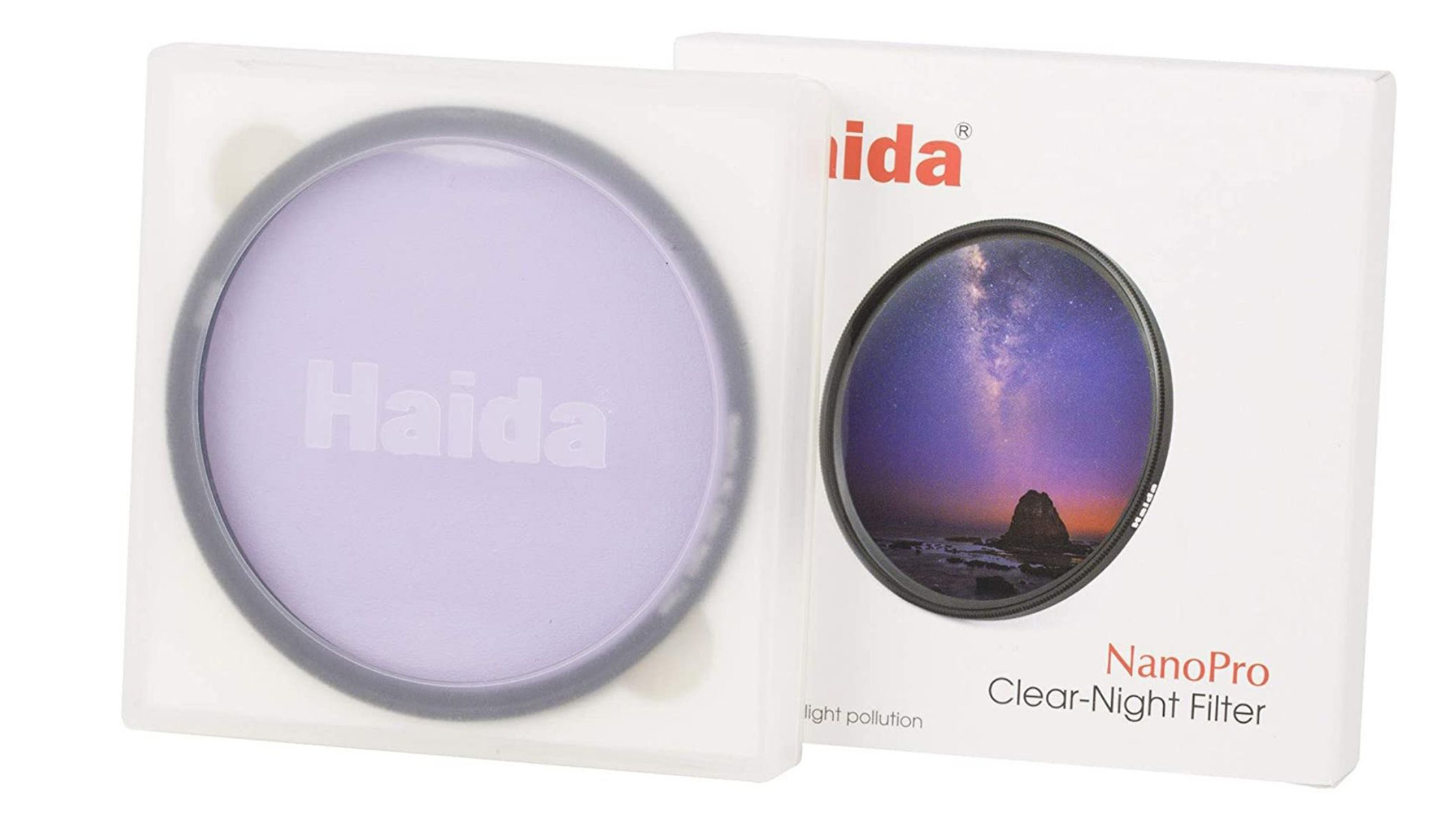
Haida NanoPro MC Clear-Night light pollution filter
Our expert review:
Specifications
Reasons to buy
Reasons to avoid
✅ You use a drone: You can buy a small version for DJI drones.
❌ You want something premium: It's a great light pollution filter, but if you want to invest in a premium filter, there are more suitable options on this list.
🔎 Haida NanoPro MC Clear-Night light pollution filter: It does a great job of removing the yellowish glow often seen in nighttime cityscapes, and you can even buy a tiny version for your DJI drone. ★★★★
We think the Haid NanoPro MC Clear-Night filter is one of the best choices of light pollution filters currently on the market. It does a fantastic job of cutting out light pollution from artificial sources, particularly the yellow-colored glow you'll find in nighttime cityscapes. Using this filter will give your images a natural color, helping make your photography as beautiful as possible.
And, unlike other filters on this list, it won't reduce luminosity as a result, so your images will still appear bright — for better or for worse. You'll likely have to darken the skies in one of the best photo editing apps.
The NanoPro MC Clear-Night filter comes in different sizes and formats to fit various needs. Whether you need a circular filter or a filter insert for a holder, you’ll find one that works for your setup. Drone users will also be happy to know there's a small version made specifically for DJI drones, ideal for capturing nighttime aerial footage.
- Take a look at some of the best beginner drones
Attributes | Notes |
|---|---|
Design | Comes in various sizes and formats. |
Performance | Doesn't reduce luminosity. |
Functionality | Small version available for DJI drones. |

Jamie is an experienced science, technology and travel journalist and stargazer who writes about exploring the night sky, solar and lunar eclipses, moon-gazing, astro-travel, astronomy and space exploration. He is the editor of WhenIsTheNextEclipse.com and author of A Stargazing Program For Beginners, and is a senior contributor at Forbes. His special skill is turning tech-babble into plain English.
Best filters for light pollution FAQ
Do I need one of the best light pollution filters?
If you're lucky enough to live near one of the best places for astrophotography and skywatching, you probably don't need a light pollution filter. But for the rest of us, it'll depend on your local light pollution level. Take a look your location or the location you want to visit on this light pollution map. The measurements are done manually on the ground using a Sky Quality Meter (SQM), with results lower than 20 SQM meaning light polluted skies.
Another way of measuring the darkness of night skies is the Bortle scale, which rates skies from Class 1 (the darkest possible at 22 SQM) to Class 9 (inner-city skies at below 18 SQM).
Read more in our How dark is your night sky? An observer's guide page. If you're in the latter, you're out of luck — no filter will get you great-looking astrophotography, but if you're in Class 5 or Class 6 suburban skies (about 19-20.5 SQM) then a light pollution filter can help night and astrophotographers enormously.
Do photography light pollution filters work?
Yes, light pollution filters for cameras work by reducing the effects of light pollution when taking astrophotographs. Before you choose a light pollution filter it's worth bearing in mind that they are most effective when used with astro-modified cameras, meaning cameras that are specifically designed to shoot astrophotography. This is because these cameras are made to be more sensitive to hydrogen-alpha wavelengths.
Do light pollution filters work on white LED streetlights?
The new generation of LED streetlights increasingly found in cities are more of a challenge to filter out because they emit light across a broader spectrum than traditional ones. This is important to keep in mind when choosing a filter to cut light pollution because most existing light pollution filters are designed to reduce the older, orange type that use sodium vapor to create the light.
What shape light pollution filter do I need?
Light pollution filters come in three distinct physical shapes and sizes: Circular filters that screw onto lenses, square filters that need to be used with a filter holder and finally tiny clip-in versions that can be placed over a camera's sensor. The former is best for wide-field starscapes and the latter for close-up astrophotography of celestial objects.
How much do light pollution filters cost?
Exact specifications, ideal uses and prices vary wildly between models, from under $20 to several hundred. We've made sure to include filters at a variety of price points so you can find the perfect accessory no matter what your budget is.
Update log
Editor's Note 3/20/25: Optolong L-Ultimate light pollution filter was added as best for deep space and introduction was updated to mention of the new moon on March 29th to reflect current celestial events.
How we test the best light pollution filters
To guarantee you're getting honest, up-to-date recommendations on the best light pollution filters to buy here at Space.com we make sure to put every light pollution filter through a rigorous review to fully test each product. Each light pollution filter is reviewed based on many aspects, from its material, size, shape, compatibility and quality of filtration.
Each light pollution filter is carefully tested by expert staff or knowledgeable freelance contributors who thoroughly know their subject areas. This ensures fair reviewing is backed by personal, hands-on experience with each light pollution filter and is judged based on its price point, class, and destined use.
We look at how easy each light pollution filter is to insert, whether it has additional coatings, how fragile they are, and how it will improve your images. We want you to have the best photography experience possible.
With complete editorial independence, Space.com is here to ensure you get the best buying advice on light pollution filters, whether you should purchase one or not, making our buying guides and reviews reliable and transparent.
Breaking space news, the latest updates on rocket launches, skywatching events and more!

Jamie is an experienced science, technology and travel journalist and stargazer who writes about exploring the night sky, solar and lunar eclipses, moon-gazing, astro-travel, astronomy and space exploration. He is the editor of WhenIsTheNextEclipse.com and author of A Stargazing Program For Beginners, and is a senior contributor at Forbes. His special skill is turning tech-babble into plain English.
- Chris McMullenContributing Writer
- Kimberley LaneContributing writer
- Jase Parnell-BrookesManaging Editor, e-commerce
- Harry BennettE-commerce Staff Writer
